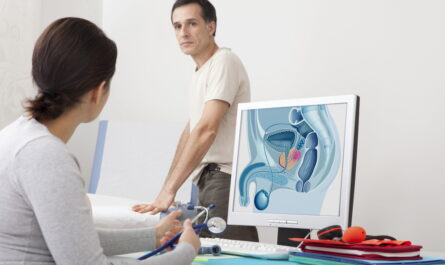
History and Development of Prosthetic Heart Valves
The first successful heart valve replacement surgery was performed in the 1960s, ushering in a new era of treatment for valvular heart disease. Prior to the development of artificial valves, severe valve disorders were often fatal, as there were no treatment options available. Pioneering cardiac surgeons like Alain Carpentier in France began experimenting with different prosthetic materials and designs to create functioning replacement valves. Some of the earliest artificial valves utilized prosthetic balls and cages made of materials like Teflon and Silastic rubber. Through numerous clinical trials involving thousands of patients worldwide, surgeons gradually refined valve designs and operation techniques over the following decades.
Modern Prosthetic Heart Valves
Today, there are three main types of prosthetic heart valves in clinical use – mechanical valves, bioprosthetic valves (tissue valves), and homograft valves. Mechanical valves are constructed from non-biological materials like carbon and various metals alloyed with titanium. They have movable discs or leaflets that open and close to regulate blood flow. Due to their durability, mechanical valves can last the lifetime of the recipient with minimal risk of structural deterioration. However, the presence of foreign surfaces increases the risk of blood clot formation, requiring patients to take anticoagulant medications lifelong.
Bioprosthetic or tissue valves are engineered from either animal (porcine or bovine) tissues or human donor cadaver tissues. The intention is to mimic the structure and function of native heart valves as closely as possible using biological materials. Porcine (pig) and bovine (cow) tissue valves are commonly used due to availability. They have a low risk of clotting and thus do not routinely require anticoagulation therapy. However, the non-human origin leads to an increased risk of calcification and structural valve deterioration over 10-20 years, eventually necessitating re-replacement in many patients.
Homograft or human tissue valves are harvested from human cadaver donors and transplanted directly or after minimal treatment. They carry the lowest risk of clotting and calcification compared to mechanical or other bioprosthetic valves. However, due to shortage of donors and required tissue matching, homografts make up a very small percentage of heart valve replacement procedures globally. Cryopreserved (frozen) homografts have shown promise in extending tissue durability compared to conventional preservation techniques as well.
Factors Considered in Prosthetic Valve Selection
The choice of prosthetic valve depends on individual patient factors like age, lifestyle, other medical conditions, lifestyle requirements and goals of therapy. Younger, more active patients beneath the age of 60-65 are usually offered mechanical valves due to their long-lasting durability, allowing a more active lifestyle without reoperation worries or risks of structural valve deterioration over the lifespan. However, they require lifelong anticoagulation with medications like warfarin which has bleeding risks and dietary restrictions.
Older patients and those with other medical issues that raise bleeding risks are often provided bioprosthetic valves to avoid blood thinners. However, tissue valves only last 10-20 years on average before needing replacement, incurring additional surgical risk with each reoperation especially in elderly patients. For those expected to outlive the durability of a bioprosthetic valve, a mechanical valve may still be recommended. Careful discussion weighing all pros and cons is necessary in individualized decision making.
Surgical Techniques and Outcomes
Heart valve replacement surgery involves opening the chest cavity through a median sternotomy incision and placing the patient on cardiopulmonary bypass. The damaged native valve is completely excised and replaced with the prosthetic device, which is sutured into position using careful surgical methods and techniques. Recovery afterwards may require 1-2 weeks in hospital and 4-6 weeks of limited activity while healing.
With advances in surgical techniques and technology, early and late outcomes after prosthetic valve replacement have dramatically improved over the decades. In skilled centers today, 30-day mortality rates are below 3% even for high-risk patients. Ten-year survival post-operation exceeds 70% according to registry studies. Careful postoperative care involving cardiac rehabilitation and special medical therapy can help recipients enjoy near normal quality of life and longevity comparable to the general population. Periodic cardiology follow up is still required due to lifelong medication needs in some patients.
Overall, modern artificial heart valves have transformed the prognosis of valve disease, giving patients with life-threatening disorders the chance for extended functional lives through a single surgical intervention. Continued research aims to further reduce surgical trauma and recovery times while developing novel valve designs with optimized durability and reduced thrombogenicity. With further innovations, prosthetic valves should continue improving quality of life for tens of millions of individuals around the globe impacted by valvular cardiac conditions.
*Note:
- Source: Coherent Market Insights, Public sources, Desk research
- We have leveraged AI tools to mine information and compile it



